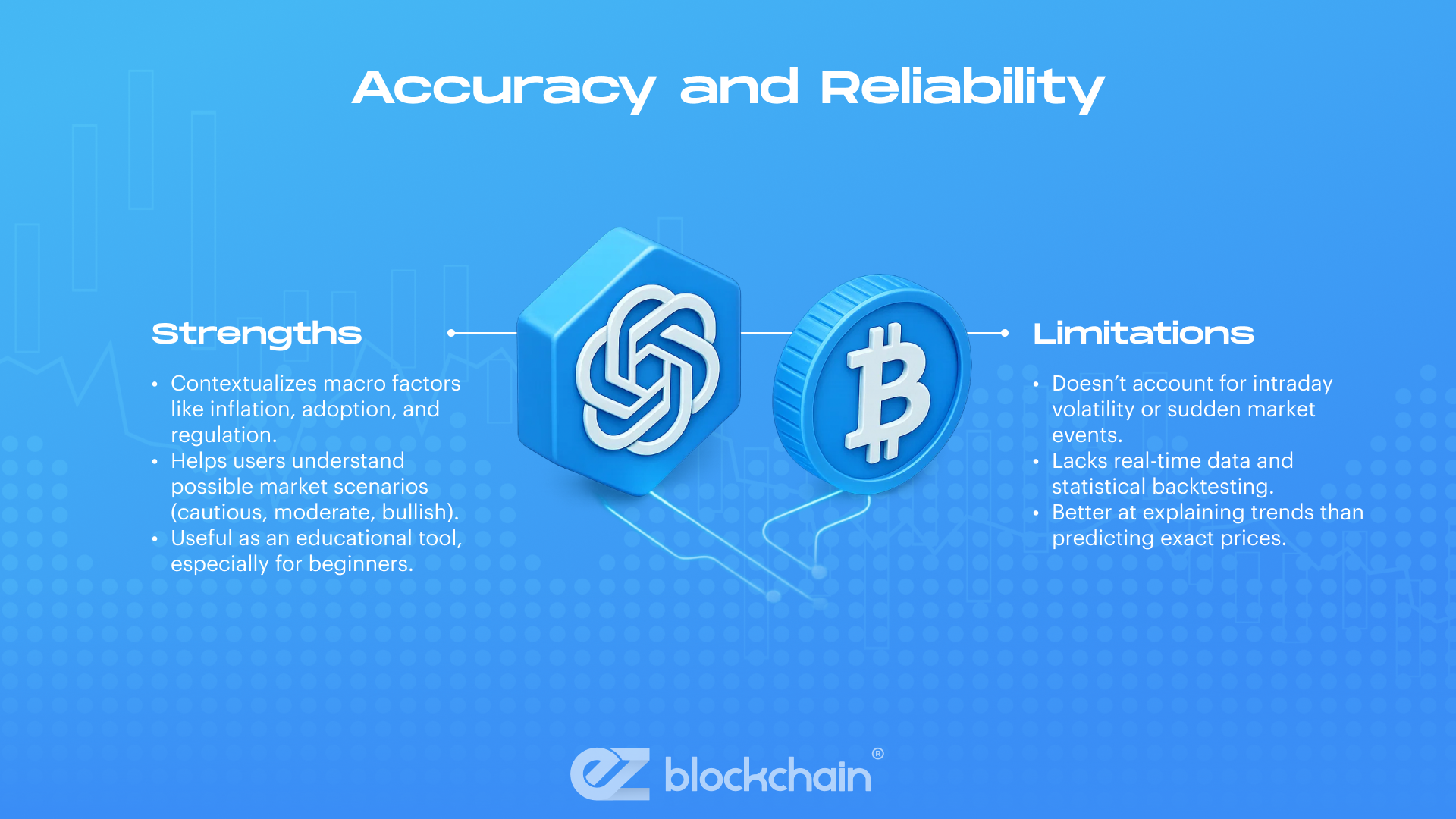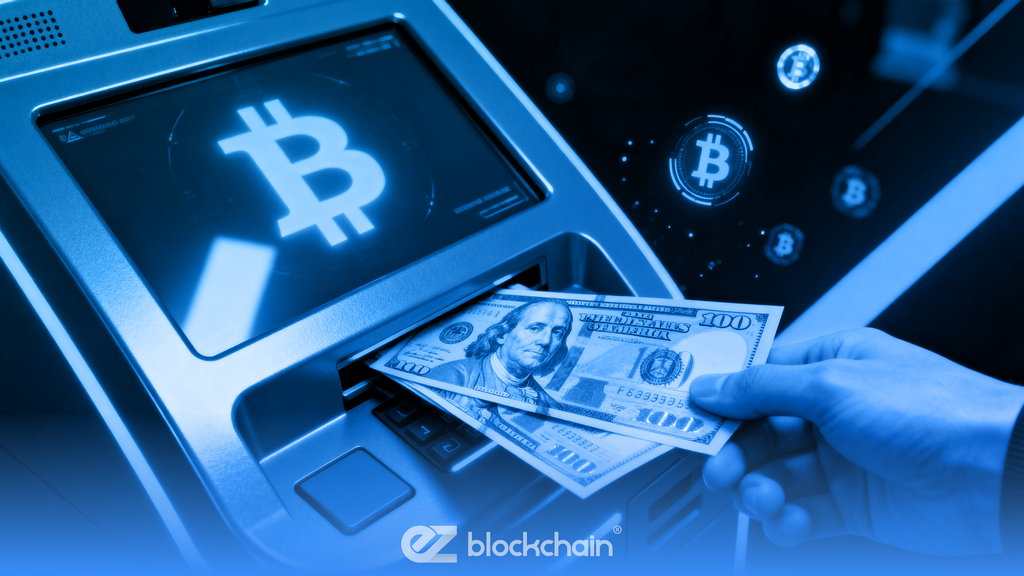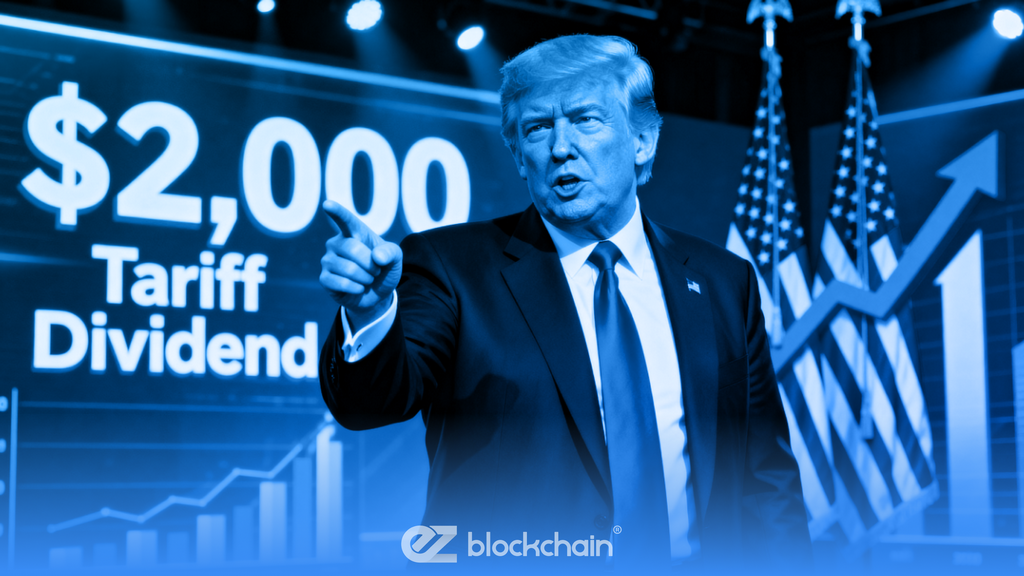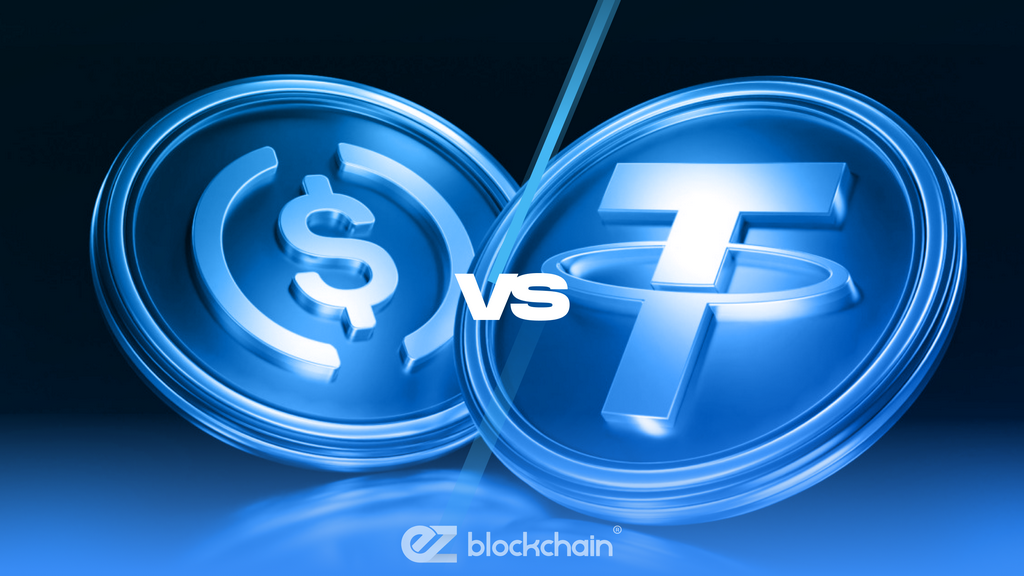Stay up to date with the latest news, announcements, and articles.
This post will look at how this AI gadget could boost your crypto journey, from breaking down queries to fitting into trading, while keeping its limits in mind. We’ll also check out ChatGPT’s crypto guesses as we go, seeing how they stack up against other AI-powered insights.
How AI Analyzes Bitcoin Price Movements
Systems take in data from different sources: social media, news, or request data. In a matter of seconds, they extract insights from huge datasets. AI, for instance, needs just a few seconds to produce a detailed comparative analysis of Bitcoin (BTC) and Ethereum (ETH).
AI algorithms look at past volatility and request trends to evaluate the risks linked to specific cryptocurrencies. Some investors show particular interest in ChatGPT Bitcoin price prediction models that examine specialized data.
Machine Learning and Data Analysis
The crypto market has been all over the place, showing lots of ups and downs. People now turn to machine learning models to predict where different cryptocurrencies might head.
- Supervised Learning: These models work with labeled data to spot patterns between past prices and future predictions.
- Reinforcement Learning: This learning technique offers rewards for accurate guesses, suiting itself well to sharp price swings.
- Neural Networks: Some advanced AI systems use sequential inputs to predict market behaviors. Models like CNNs and LSTMs stand out for this.
- Natural Language Processing (NLP) Models: NLP tools scan forums and news to figure out how emotions or opinions might push prices up or down.
AI paves the way for developing new cryptocurrency trading strategies. Advanced machine learning tools analyze prices, volumes, and social media activity at high speed. This creates opportunities such as ChatGPT Bitcoin prediction tools combining automation with language-based reasoning.

Historical Price Patterns
AI goes through huge amounts of data on the crypto market to spot trends and connections that help it predict future price changes. The main data points AI looks at are:
- Historical Price Trends: AI models search for repeating patterns in past price changes. By spotting upward and downward trends, AI can predict possible price paths based on earlier performance.
- Trading Volume Analysis: Jumps in trading volume often come before price shifts. AI examines volume changes to assess how strong market trends are and to forecast future breakouts or drops.
- News and Market Events: AI systems analyze news, laws, and economic trends to figure out how they affect cryptocurrency. Big investors getting involved or sudden changes in rules can shake up coin prices.
As a result, Chat GPT Bitcoin price prediction systems work together with studies of trading volume, market sentiment, and key events to give a more balanced view.
Limitations of AI in Forecasting
Using test data based on steady market conditions, the study forecasts Bitcoin’s closing price with high visual precision (low MAE, low RMSE, and very high R²). It applies an XGBoost regressor trained on past price and technical indicators like MACD and stochastic oscillators. The model assumes that previous behavior will be enough to predict the risk of overfitting, and its predictive power has limits.
External shocks and structural breaks don’t get enough attention. Using data from shorter time periods shows changes in volatility but can add noise and reduce stability. Also, just depending on technical indicators leaves out things that can affect price in different ways but aren’t part of these AI models, like economic factors, on-chain data, or any info that’s not about price. That’s why even the best AI bot for crypto trading should always be used along with risk management and human gut feeling.
Market Volatility
Financial markets are by nature volatile and can change radically based on geopolitical events, economic changes or black swan scenarios. AI models would find it hard to predict for those extreme events of sudden shifts that are outside of the modelled historical data.
Past data biases may influence crypto forecast estimates and predictions. The decision procedure of most AI models, especially deep learning (DL) networks is complex and opaque to understand, which are known as “black box” models. Interpreting the grounds of a model’s forecasts is critical in risk estimation and regulatory determination, since the bias of forecast influences the confidence of forecast. Traders take these AI cryptocurrency predictions with a grain of salt, knowing that they are meant to form only one part of their analysis and not absolute truth.
External Factors
ChatGPT trading insights are constrained by both internal and external factors. Model reliability can be diminished by abrupt shocks that no previous dataset can adequately capture, such as market volatility, regulatory changes, geopolitical events, and economic situations. Furthermore, there is a shortage of sensitive, high-quality real-time data.
Infrastructure needs also come into play: implementing scalable AI systems necessitates a large investment in compute power, storage, and data pipelines, and adhering to changing financial and data protection laws adds even more complexity.
Comparing AI Predictions to Human Analysis
With the help of cryptocurrency expert Valdrin Tahiri and two AI models, ChatGPT and Grok, CCN.com investigated in August 2025 if Bitcoin may be valued at $1 million.
Three probability trajectories—conservative ($150k–$250k), moderate ($500k–$750k), and bullish ($1M+)—were described by ChatGPT, with important drivers being institutional uptake, depreciation of fiat currencies, and worldwide adoption of reserve assets. Grok adopted a more cautious approach, stressing issues like volatility and regulatory barriers while acknowledging the potential for a $1 million Bitcoin and highlighting the necessity for broad adoption and public enthusiasm. Tahiri went on to say that Bitcoin might theoretically hit an upper limit of $1.3 million by 2030 if its previous logarithmic growth trend holds true.
This would need significant institutional or governmental investment. The analyst and AI models both concur that widespread adoption, macroeconomic changes, and clear regulations are necessary preconditions. The milestone is a conceivable but speculative possibility since, although theoretically attainable, it is still heavily dependent on certain structural and economic factors. It also highlights how far AI crypto price prediction tools have come compared to earlier speculative models.
Accuracy and Reliability
ChatGPT creates scenario-based probabilistic models by examining past data patterns, macroeconomic variables, and established market dynamics rather than making deterministic forecasts about the price of Bitcoin. Its results are useful for describing possible ranges (such as cautious, moderate, and bullish scenarios), but because bitcoin markets are inherently volatile, they are imprecise. View its advantages and disadvantages in this area:
Strengths:
- explains economic factors (inflation, adoption, and regulation) in a contextualized manner.
- helps traders comprehend market contingencies by framing situations.
- beneficial as a teaching tool for non-technical people.
Limitations:
- cannot take intraday volatility, black swan events, or abrupt market shocks into consideration.
- predictions are not dependent on statistical backtesting or real-time data streams.
- more adept at describing broad patterns than setting specific price goals.
Instead of using real-time data or proprietary trading signals, ChatGPT’s responses rely on pattern recognition and the synthesis of publicly available knowledge, in contrast to statistical forecasting models that employ quantitative regressions or machine learning based on time-series data.

Tools for Crypto Traders
It is better to think of ChatGPT as a support tool as opposed to a trading engine. Although it lacks the accuracy of real-time analytics or algorithmic models, it aids traders in understanding market dynamics, rules, and tactics. For trade judgments to be actionable, they must be used in conjunction with specialist crypto tools.
| What ChatGPT does well | What ChatGPT can’t replace | |
| Market Insights | Explains macroeconomic drivers, adoption trends, and regulations | Real-time market prediction |
| Strategy Support | Compares mining/trading methods and outlines risks | Algorithmic trading models |
| Education | Simplifies complex topics and supports risk management | On-chain analytics and backtesting |
Ethical and Practical Considerations
From an ethical standpoint, depending exclusively on AI-powered forecasts may mislead novice traders into becoming overconfident, particularly if forecasts are taken as absolutes rather than probabilistic scenarios. In order to avoid abuse in speculative markets, ChatGPT should be used as a decision-support tool rather than a trading engine.
It should also be used responsibly and with transparency on its limits. Disciplined strategy, risk management, and the integration of several trustworthy data sources are still necessary for success in the cryptocurrency space. AI should be used to supplement human judgment rather than to replace it.
Fill out a form and our bitcoin mining expert will contact you.
FREE CONSULTATIONchoose
a miner
profit and
understand data?
business remotely
with EZ Blockchain?
Fill out a form and our bitcoin mining expert will contact you.









